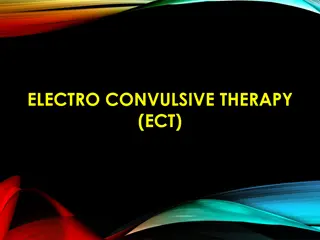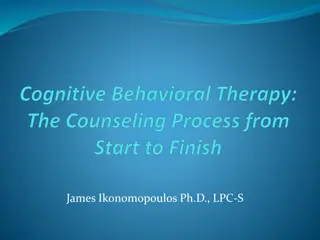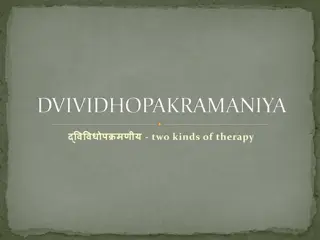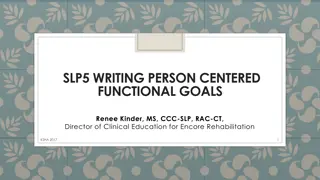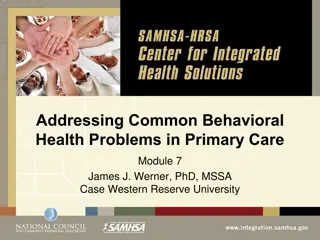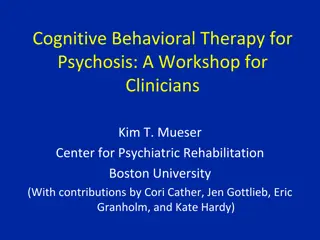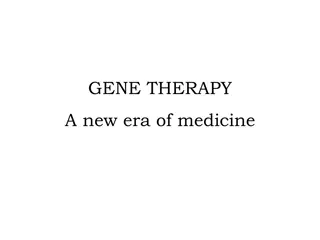
Behavioral Therapy
Explore the concept of behavioral therapy, rooted in behaviorism, with a focus on techniques, types, and benefits for modifying maladaptive behaviors. Cognitive behavioral therapy (CBT), applied behavior analysis, and exposure therapy are among the discussed approaches.
Download Presentation

Please find below an Image/Link to download the presentation.
The content on the website is provided AS IS for your information and personal use only. It may not be sold, licensed, or shared on other websites without obtaining consent from the author. If you encounter any issues during the download, it is possible that the publisher has removed the file from their server.
You are allowed to download the files provided on this website for personal or commercial use, subject to the condition that they are used lawfully. All files are the property of their respective owners.
The content on the website is provided AS IS for your information and personal use only. It may not be sold, licensed, or shared on other websites without obtaining consent from the author.
E N D
Presentation Transcript
StudyMafia.Org Behavioral Therapy Submitted To: Studymafia.org Studymafia.org Submitted By:
Table Contents Definition Introduction Types of Behavioral Therapy Techniques of Behavioral Therapy How it Helps? Benefits of Behavioral Therapy Things to Consider Conclusion 2
Definition Behavioral therapy is a term that describes a broad range of techniques used to change maladaptive behaviors. 3
Introduction Behavioral therapy is rooted in the principles of behaviorism, a school of thought focused on the idea that we learn from our environment. Unlike the types of therapy that are rooted in insight (such as psychoanalytic therapy and humanistic therapies), behavioral therapy is action-based. Because of this, behavioral therapy tends to be highly focused 4
Types of Behavioral Therapy Applied behavior analysis uses operant conditioning to shape and modify problematic behaviors. Cognitive behavioral therapy (CBT) relies on behavioral techniques, but adds a cognitive element, focusing on the problematic thoughts behind behaviors. 6
Types of Behavioral Therapy Cognitive behavioral play therapy utilizes play to assess, prevent, or treat psychosocial challenges. The therapist may use play to help a child learn how to think and behave differently. Dialectical behavioral therapy (DBT) is a form of CBT that utilizes both behavioral and cognitive techniques to help people learn to manage their emotions, cope with distress. 7
Types of Behavioral Therapy Exposure therapy utilizes behavioral techniques to help people overcome their fears of situations or objects. Rational emotive behavior therapy (REBT) focuses on identifying negative or destructive thoughts and feelings. People then actively challenge those thoughts and replace them with more rational, realistic ones. 8
Techniques of Behavioral Therapy Classical conditioning It involves forming associations between stimuli. Previously neutral stimuli are paired with a stimulus that naturally and automatically evokes a response. After repeated pairings, an association is formed and the previously neutral stimulus will come to evoke the response on its own. 9
Techniques of Behavioral Therapy Aversion therapy This process involves pairing an undesirable behavior with an aversive stimulus in the hope that the unwanted behavior will eventually be reduced. For example, someone with an alcohol use disorder might take Antabuse (disulfiram), a drug that causes severe symptoms. 10
Techniques of Behavioral Therapy Flooding: This process involves exposing people to fear- invoking objects or situations intensely and rapidly. It is often used to treat phobias. During the process, the individual is prevented from escaping or avoiding the situation. 11
Techniques of Behavioral Therapy Flooding: This process involves exposing people to fear- invoking objects or situations intensely and rapidly. It is often used to treat phobias. During the process, the individual is prevented from escaping or avoiding the situation. 12
Techniques of Behavioral Therapy Systematic desensitization: In this technique, people make a list of fears and then learn to relax while concentrating on these fears. Starting with the least fear-inducing item and working their way to the most fear- inducing item, people systematically confront these fears under the guidance of a therapist. 13
Techniques of Behavioral Therapy Operant Conditioning Operant conditioning focuses on how reinforcement and punishment can be utilized to either increase or decrease the frequency of a behavior. Behaviors followed by desirable consequences are more likely to occur again in the future, while those followed by negative consequences become less likely to occur. 14
How it Helps? Behavioral therapy can be utilized to treat a wide range of psychological conditions and disorders, including: Bipolar disorder Alcohol and substance use disorders Anxiety Attention-deficit/hyperactivity disorder (ADHD) Autism spectrum disorders 15
How it Helps? Borderline personality disorder (BPD) Depression Eating disorders Panic disorder Phobias Obsessive-compulsive disorder (OCD) 16
Benefits of Behavioral Therapy Behavioral therapy is widely used and has been shown to be effective in treating a number of different conditions. Cognitive behavioral therapy, in particular, is often considered the "gold standard" in the treatment of many disorders, and cognitive behavioral play therapy, specifically, can be effective for children where other types of therapy aren t 17
Benefits of Behavioral Therapy CBT is most effective for the treatment of: Anger issues Anxiety Bulimia Depression Somatic symptom disorder Stress Substance abuse and relapse prevention 18
Things to Consider When treating certain psychiatric disorders such as severe depression and schizophrenia, behavioral therapy often must be used in conjunction with other medical and therapeutic treatments. It May Not Account for Underlying Problems Behavioral treatments tend to focus on current problems with functioning and may not fully appreciate or address the underlying factors that are contributing to a mental health problem. It's Not Enough for Complex Mental Health Conditions 19
Things to Consider Behavioral approaches are centered on the individual working to change their behaviors. Some of these approaches, however, often don't address how situations and interpersonal relationships might be contributing to a person's problems. It May Not Address the Whole Picture 20
Conclusion Behaviour therapy is a treatment approach originally derived from learning theory, which seeks to solve problems and relieve symptoms by changing behaviour and the environmental contingencies which control behaviour. 22
References Google.com Wikipedia.org Studymafia.org Slidespanda.com
Thanks To StudyMafia.org




